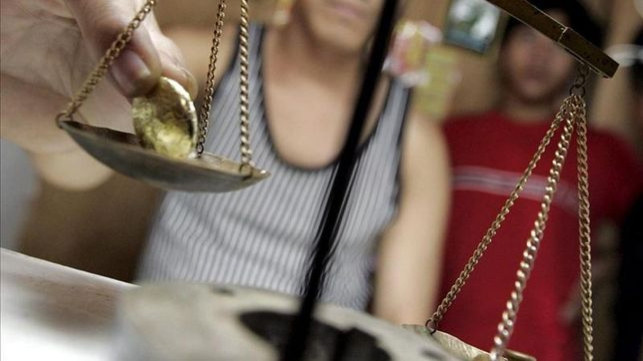The Dark Side of El Dorado: Illegal Gold Mining In Peru Generating More Money Than Drug Trafficking

The legend of “El Dorado” has taken a decidedly dark turn in the South American nation of Peru, where soaring gold prices – the yellow metal has surged more than 300 percent since July 2009 – has prompted thousands of ill-prepared and ill-trained Peruvians to try their luck at mining.
In fact, so much gold has been produced by the “informal” (or “illegal’) mining sector in Peru – involving some 40,000 miners who have tried to scrape whatever they can in abandoned mines around the country, from the jungle province of Puerto Maldonado to the deserted landscape of Ica – that gold has become more lucrative than cocaine trafficking (of which Peru is the largest exporter, having surpassed Colombia in 2012, according to the United Nations).
Illegal mining is present in 21 of the 25 provinces of the country, and, according to official figures, currently generates revenues of around $3 billion – 15 percent more than estimated drug trafficking profits.
Peru is now also the sixth-largest producer of gold in the world, according to the London-based metals-consulting company CRU. However, much of that production comes from illegal operations.
According to a report in the Peruvian Times, illegally mined gold accounts for one-fifth of Peru’s gold exports, citing figures from the national tax agency, Sunat.
Aside from the 40,000 “illegal” miners, this business also encompasses 300,000 other workers, either directly and indirectly.
According to José Echave, Peru’s former deputy minister for the environment, the scale of illegal mining in the Andean state has grown five times in the past six years. Indeed, the informal mining sector is now 2.5 times larger than the pool of legitimate mining workers.
In many mining areas of the country, such as Madre de Dios, illegal mining represents up to 50 percent of the region’s economic output.
Aside from economic factors, illegal mining has had a negative ecological impact. Mercury, which is used by the miners to extract the gold in the mines, is used liberally – an estimated 26,000 kilograms a year, which are later dumped next to the mines, contaminating nearby land and rivers. According to a study by Stanford University, 75 percent of the population of Madre de Dios is exposed to the heavy metal that is three times above tolerable limits, including 69 percent of the children.
Such mercury contamination particularly hurts the indigenous community, poisoning the fish stock and causing the deforestation of thousands of acres of Amazon rainforest.
“This is the other side of the mining boom,” Echave told the Chilean newspaper El Mercurio. “The damage is incalculable.”
Peru has tried to integrate the activity of informal miners into the legal mining industry, but this has proven a major challenge. In late 2012, the government opened the way for informal miners to register within the national tax agency and file their earnings, in exchange for social security and benefits. However, according to estimates, only one-third of informal miners applied before the government found itself overburdened and actually ran out of forms.
“This problem [of illegal mining] has taken off in the last few years due to the high price of gold and the inaction of the state,” the chief of Sunat, Tania Quispe, told the newspaper El Comercio of Peru.
The problem is not exclusive to Peru; Colombia, Bolivia and Ecuador have also reported an increase in the number of illegal miners.
In Colombia in particular, the activity has been linked to militant groups, such as the Revolutionary Armed Forces of Colombia (FARC), which control several areas of the country and all the resources, including mining.
“Mining and forestry are controlled by the FARC and other criminal gangs,” said Richard Moreno, legal adviser to online news site Voxxi. “If you don’t hand over extortion payments, you can’t work there.”
In many cases, illegal mining is aided and abetted by corruption among high-ranking politicians. For example, Echave mentioned the case of Peruvian congressional member Amado Romero, who in 2012 was accused of having illegal links to mines in Madre de Dios.
“A multi-sector intervention is needed,” said Echave. “Local, regional, national and international organizations need to collaborate. There is not going to be a miracle solution – it will take time.”
© Copyright IBTimes 2024. All rights reserved.





















